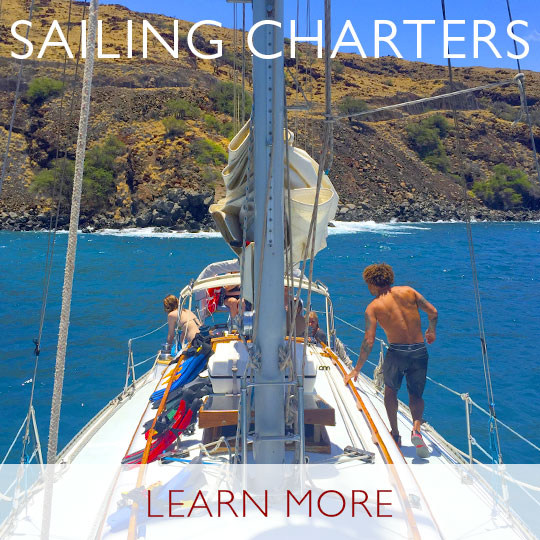EXPLORING MAUI’S SIX REGIONS
Swaying palms, golden beaches, and luxurious resorts: if you’re a first-time visitor to Maui, chances are good you’re expecting all of the aforementioned selling points from our little island. And good news, you’ll get them! However, what you might not know is that Maui is home to much more than what is typically marketed to visitors. Sprawling ranches, subalpine forests, and rugged coastlines also characterize the Valley Isle. This post will detail Maui’s six main regions: West Maui, South Maui, Central Maui, North Shore, Upcountry, and East Maui – all as different as the last.

So take notes; we’ll be outlining the deluge of things to do, places to go, as well as the different climates and atmospheres of each region.

WEST MAUI
*** On August 8, 2023 wildfires on Maui devastated the West Maui town of Lahaina and the surrounding area. Our deepest condolences go out to all of the people, families, and businesses affected by this terrible event. Unfortunately, Lahaina Town and Lahaina Harbor will be off-limits for some time, but small businesses, activity companies, and restaurants in other parts of Maui will need the help of visitors to stay afloat. Please visit, donate, volunteer, and support local whenever possible.
Encompassing the towns of Lahaina, Kaʻanapali, Honokowai, Kahana, Napili, and Kapalua, West Maui is one of the most popular places for visitors to stay. This area of Maui is known for its beaches, snorkeling, variety of accommodations, shopping, and golf courses.
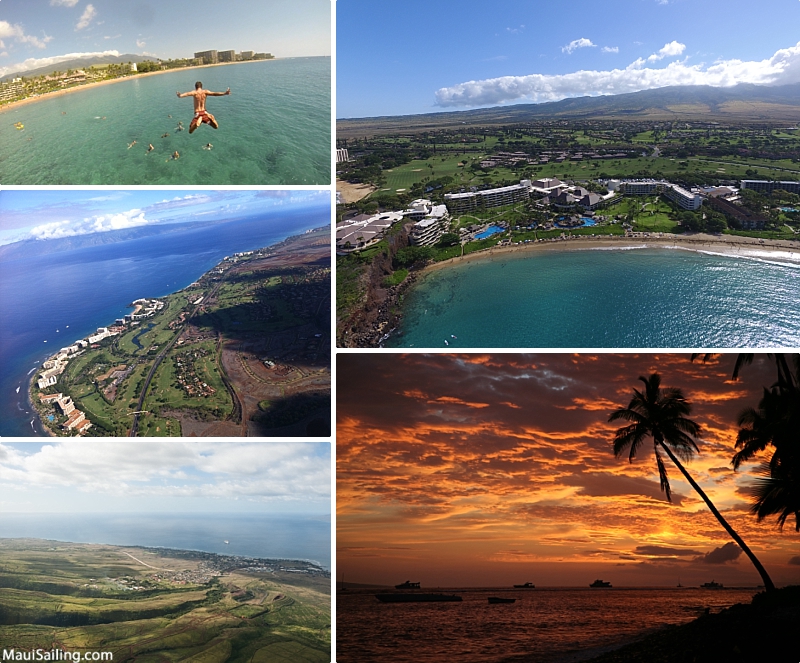
Accommodations: The West Side is home to a range of accommodations, from budget condos to upscale oceanfront resorts. In Kaʻanapali and Kapalua, you’ll find luxury resorts rife with amenities like sprawling pools, spas, shops, and dining. You’ll typically find smaller resorts, hotels, condos, and B&Bs in the surrounding areas.
Attractions: The natural beauty of West Maui is by far one of the region’s biggest allures. Golden beaches and secluded coves line the coastline, while the West Maui Mountains serve as a gorgeous backdrop. Some of the best snorkeling spots on the island are located in West Maui, like Olowalu Reef and Honolua Bay, which doubles as a great place to watch surfers in the wintertime. Meanwhile, several of West Maui’s golf courses are known to be among the best in the world.
Shopping and dining: No shortage of shopping or dining here! West Maui is home to a multitude of dining options, from five-star restaurants to local holes in the wall. You’ll also find several shopping hubs in West Maui, particularly Whaler’s Village in Kaʻanapali. On any given day in West Maui, you might also find swap meets, farmer’s markets, or art markets.
Atmosphere: Compared to other locations around Maui, the West Side is lively, with bustling streets, decent nightlife (by Maui standards), and busy beaches.
Climate: The consistently warm weather also factors into West Maui’s allure. In Hawaiian, Lahaina means ‘cruel sun .’ After a day on the beach, it’s not hard to see why. The West Side is frequently sunny and warm, but you’ll see some passing showers and cooler temperatures further north near Napili and Kapalua.
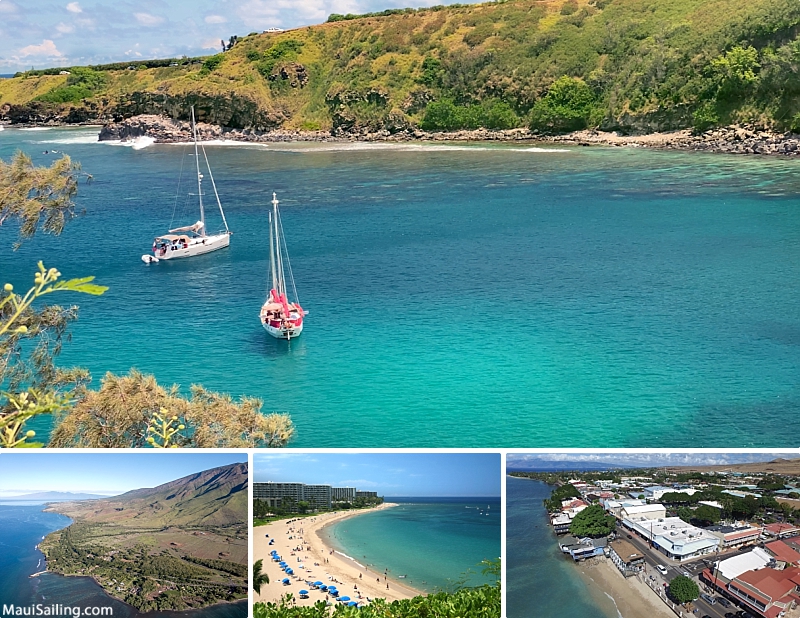
Best things to do in West Maui
- Spend a day perusing the shops and restaurants on Front Street.
- Take a snorkeling tour along the west side aboard a spacious catamaran with Trilogy. Trilogy loads directly from the sand at Ka’anapali Beach.
- Go beach hopping! Add Kaʻanapali Beach, Napili Bay, and Kapalua Bay to the list.
- Take a guided hike with Helewai Eco Tours through a privately preserved native rainforest.
- Go on a whale watch out of Maalaea Harbor. Remember, whale season runs from December to April.
- Sample some locally brewed beer at Kohola Brewery.

SOUTH MAUI
South Maui is another popular visitor destination as it is one of the driest, most consistently sunny places on Maui. South Maui includes the towns of Maʻalaea, Kihei, Wailea, and Makena.
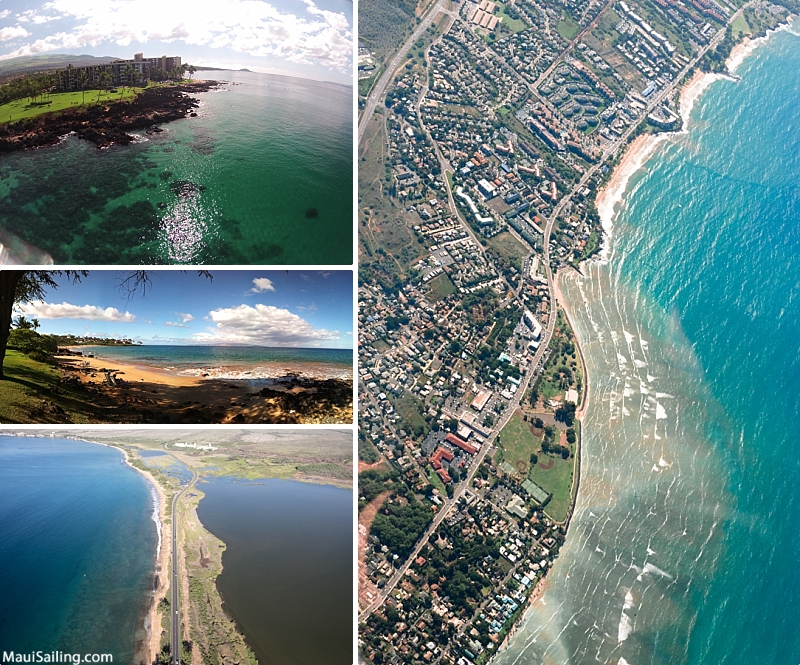
Accommodations: Much like West Maui, South Maui is home to a myriad of accommodation options. In Maʻalaea and Kihei, you’ll find both small hotels, condos, and B&B’s, while resorts dripping in amenities and luxury are usually reserved for Wailea and Makena.
Attractions: Since it’s Maui, you can expect natural beauty to be the main attraction in any corner of the island. In South Maui, the beaches and the snorkeling are the biggest allure. There are probably more swimmable beaches than West Maui and more room to spread out. Over in Maʻalaea, there is a harbor that serves as a departure point for most Molokini snorkel tours, and the largest aquarium in the state is in the area too.
Shopping and dining: There is plenty of shopping and dining in South Maui, although it’s not as condensed into one area like West Maui’s Front Street. However, one solid stop for local eats and shopping is Kihei Kalama Village, where you’ll find a collection of bars, restaurants, and souvenir shops. Otherwise, you’ll have to do some exploring along South Kihei Road. Beyond Kihei, The Shops of Wailea are also a great place to browse luxury brands and enjoy lunch or dinner.
Atmosphere: South Maui feels a bit more laid back than West Maui. Nevertheless, it is still one of the main tourist destinations on the island, so it won’t be hard to meet other travelers when you stay here. South Maui is also home to decent nightlife in the Kihei Kalama Village, also known as the Triangle. Here you’ll find nightclubs, Irish Pubs, tiki bars, and taphouses.
Climate: South Maui is one of the driest parts of the island. Rainstorms here are few and far between. You can almost always count on bright, sunny, still mornings in South Maui. However, South Maui is situated below the giant Haleakala, which can collect clouds in the afternoon.
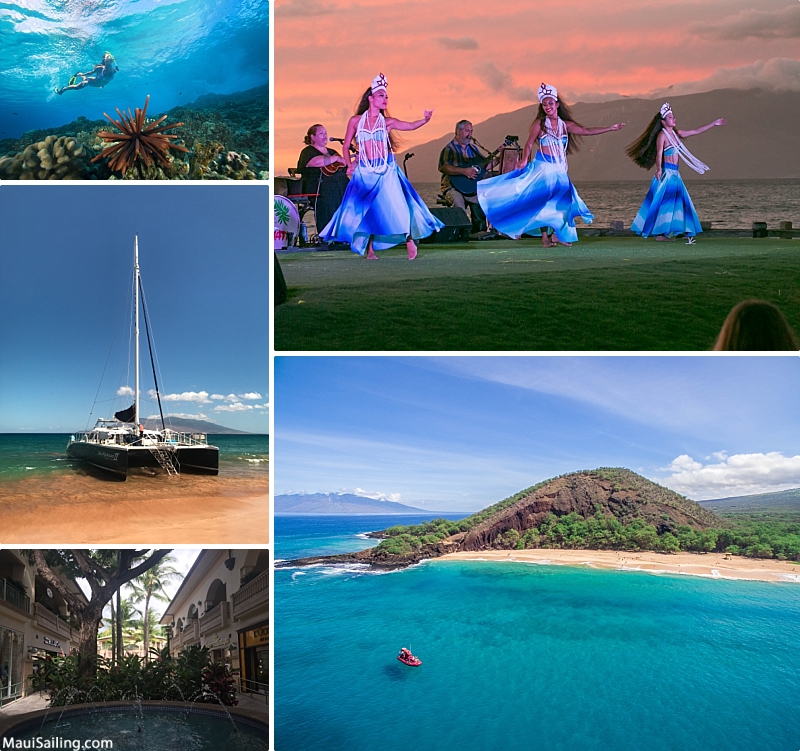
Best Things To Do In South Maui
- Take a snorkeling tour to the world-famous Molokini Crater with Redline Rafting. Redline departs from Kihei Boat Ramp, only a 15-minute boat ride from Molokini.
- Wander the Maui Ocean Center, the largest aquarium in Hawaii.
- Take a kayak/snorkeling tour out of Makena Landing.
- Go to one of Wailea’s top-rated luaus.
- Relax at one of the three Kamaole beaches.
- Enjoy a sunset dinner cruise aboard the luxurious Kai Kanani. Kai Kanani is the only catamaran in South Maui that loads from the sand at Maluaka Beach.
- In whale season, take a private whale watch with Maui Custom Charters. Maui Custom Charters offers intimate, completely private whale watches for up to six people aboard their 42′ sailboat ‘Nova.’ This tour departs Ma’alaea Harbor and cruises around the South/West Maui coast— the best place to spot whales in Hawaii!

CENTRAL MAUI
…or as those from the island call it, “town.” Central Maui is composed of the areas of Kahului, Wailuku, Waikapu, Waiehu, and Waiheʻe (also called Wai Side. Can you guess “wai”?). “Town” is the island’s business/industrial hub, home to the state and county offices, Kahului Airport, and Maui College.
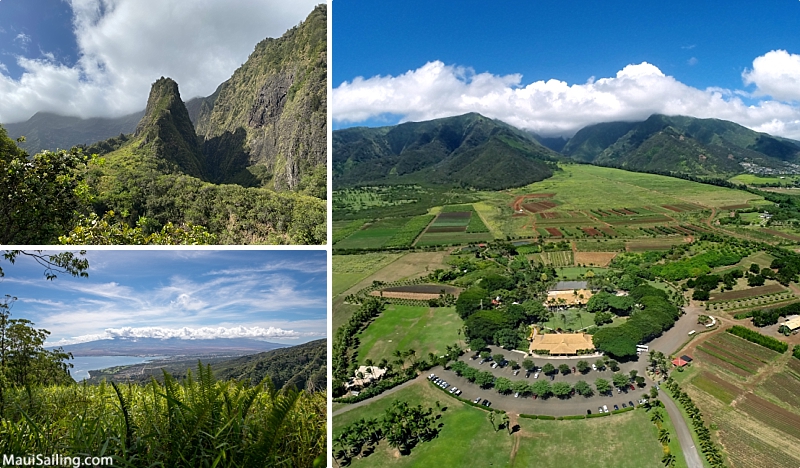
Accommodations: Central Maui is more relaxed than South and West Maui. While most visitors prefer to stay by the beach, there are a few boutique inns and B&B’s in this region. There are also a handful of hotels near the airport.
Attractions: Void of famous beaches and epic snorkeling, this area’s most popular visitor attractions are Iao Valley State Park, Waiheʻe Ridge Trail, and Maui Tropical Plantation. Iao Valley is a massive valley with precipitous cliffs and fascinating history. It’s a great place to explore and take in the majesty of the West Maui Mountains. Further north, the Waiheʻe Ridge Trail is one of the most stunning hikes on Maui. This challenging hike penetrates the interior of the remote West Maui Mountains. Maui Tropical Plantation is also in nearby Waikapu. Here you can find zipline courses, gift shops, a restaurant with stunning mountain views, and fascinating farm tours. Central Maui is also home to OGG, Maui’s main airport. This is the hub for helicopter tours and plane tours.
Shopping and dining: Shopping in this area is limited, but spend a day perusing around the local boutiques, thrift stores, and antique shops in Wailuku Town, and you’ll likely find something unique to bring back home. Otherwise, check out the sprawling Queen Kaʻahumanu Center or the Maui Mall. There are plenty of places to grab a bite, but you’ll have to explore a little to do so. Arguably, some of the best local spots are located in “town,” like Tasty Crust, Tin Roof, and Sam Sato’s, but they’re off the beaten tourism track.
Atmosphere: The environment varies wherever you go in Central Maui, but it primarily consists of industrial areas and neighborhoods. There are a few select places with nightlife, but mostly local crowds. However, Central Maui is home to the Maui Arts and Cultural Center, which hosts concerts and other events from time to time.
Climate: The climate in Central Maui is warm and windy. Tradewinds often hit the area head-on. It can get a bit cooler as you move further up the mountains towards Wailuku and Iao Valley.
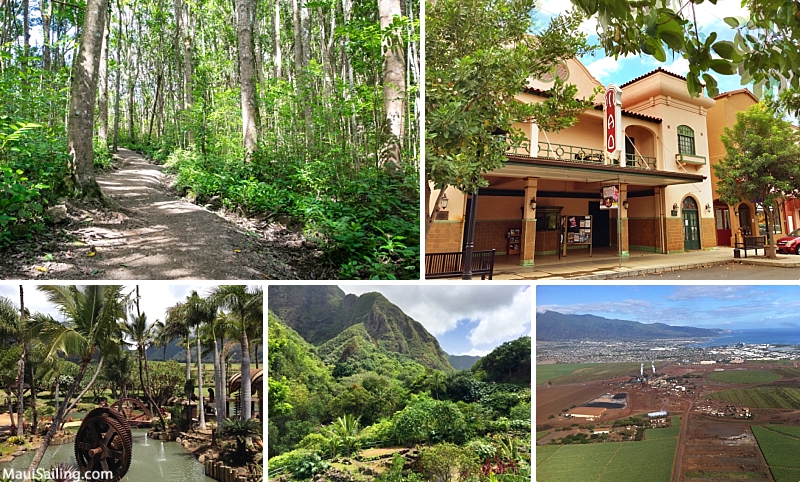
Best Things To Do In Central Maui
- Wander around the lush Iao Valley State Park and Kepaniwai Heritage Gardens.
- Go ziplining or explore the grounds at the Maui Tropical Plantation.
- Learn how to fly a plane with Fly Maui. You’ll learn an exhilarating new skill and also get aerial views of the road to Hana.
- Put your detective skills to the test at Mystery Maui Escape Rooms.
- Let the kids spend some of their energy at Maui’s only trampoline park, Ultimate Air.
- Spend a morning on the Waiheʻe Ridge Trail.

NORTH SHORE
North shore Maui is as laid back as it gets. The North Shore is a relatively small area and includes the towns of Sprecklesville, Paʻia, and Haʻiku.
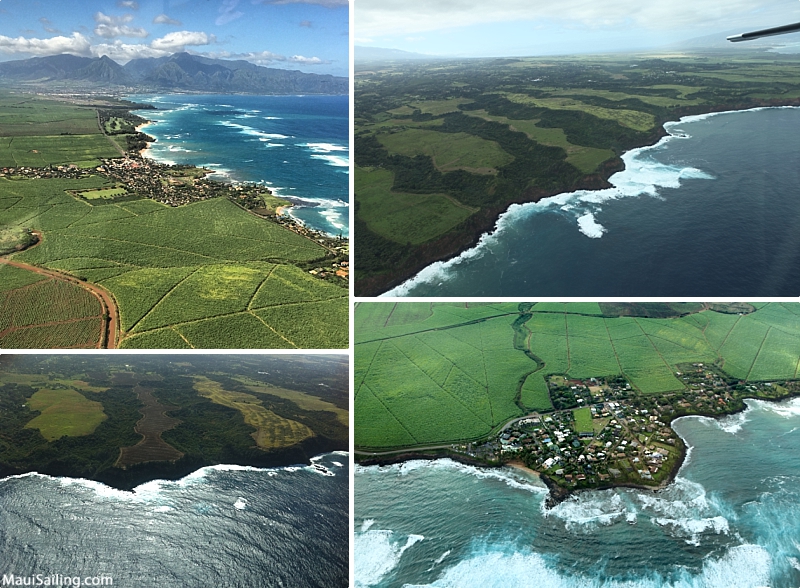
Accommodations: Paʻia is home to an inn and a hostel, and there are several B&Bs around Haiku. The North Shore is much more mellow than South, West, and Central Maui, so fewer options exist.
Attractions: Paʻia Town itself is an attraction, with colorful storefronts and great people watching. The North Shore is also home to several great beaches but relatively no snorkeling. The waves can get huge in the winter months, and the wind is usually strong year-round, making the North Shore a great place to watch surfers and windsurfers. Stop by Hoʻokipa Beach, and you’ll likely see them doing their thing.
Shopping and dining: Paʻia Town is studded with famous restaurants like Paia Fish Market and Mama’s Fish House. The neighboring town of Haʻiku boasts some great options as well, like Colleen’s and Nuka Sushi. However, Paʻia definitely wins over Haiku when it comes to shopping. You could easily spend an entire day browsing the shops in Paʻia Town. Here you’ll find anything from boutiques to music shops to funky grocery stores.
Atmosphere: The North Shore is known for its surfer/hippie vibe. It’s a great place to be if you enjoy a slower pace. Unfortunately, there is virtually no nightlife here, and most bars and restaurants close between 8 and 9. Although if you want a great cocktail and a taste of the North Shore scene, stop by Colleen’s bar in Haʻiku.
Climate: This region can get pretty windy, and it’s a bit cooler because of it. The North Shore also sees more rain than the South and West Sides, but that’s also why it’s so much greener!
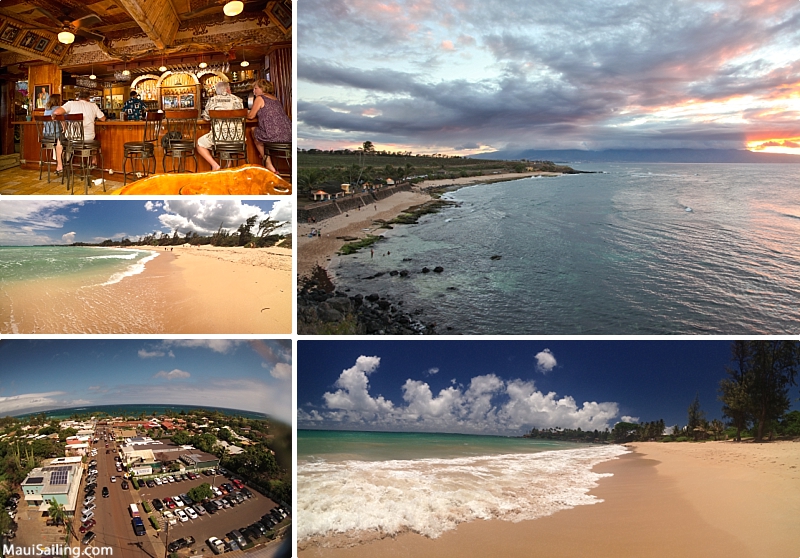
Best Things To Do On The North Shore
- Spend a day exploring Paʻia Town.
- Eat one of the best meals on the island at Mama’s Fish House.
- Watch surfers and windsurfers do their thing at Hoʻokipa Beach Park.
- Visit the Paʻia Peace Stupa.
- Take a long walk down Baldwin Beach

UPCOUNTRY
The Upcountry Region is massive, encompassing the entire front flank of Haleakala. Here you’ll find the towns of Makawao, Pukalani, Kula, and Ulupalakua. Upcountry is known for rolling green pastures, cooler temperatures, and fantastic bi-coastal views.
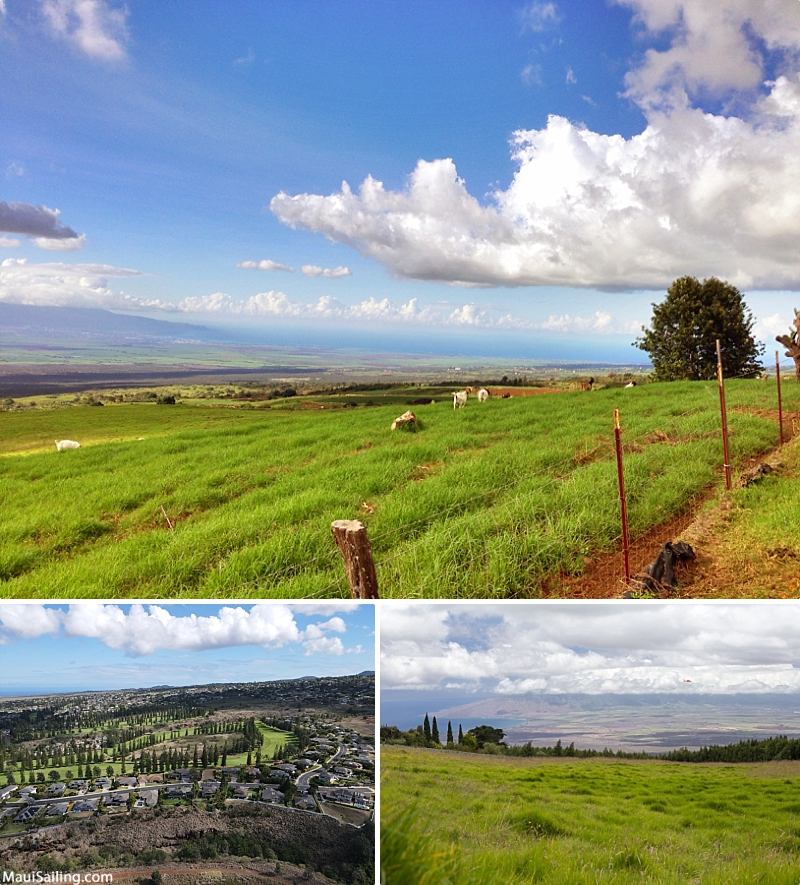
Accommodations: No hotels here! However, you can find a select few B&B’s, inns, and lodges.
Attractions: Haleakala Crater is far and away Upcountry’s biggest attraction. In fact, it’s Maui’s biggest attraction. However, Upcountry is also home to beautiful botanical gardens, lavender farms, acres of verdant ranch land, plenty of hiking trails, and even a winery and a brewery. Some people can get tunnel vision and blast through the area on their way to Haleakala, but a day spent exploring Upcountry shouldn’t be overlooked.
Shopping and dining: Makawao Town offers excellent shopping, with a handful of art galleries and local boutiques. Upcountry doesn’t skimp in the dining department either- some of the best restaurants and food trucks on the island can be found here.
Atmosphere: Utterly laid back. After all, it wouldn’t be called Upcountry if it wasn’t in the country.
Climate: Upcountry is characterized by its cooler weather. The temperatures in Kula often dip into the 40s, and Haleakala can reach below freezing.
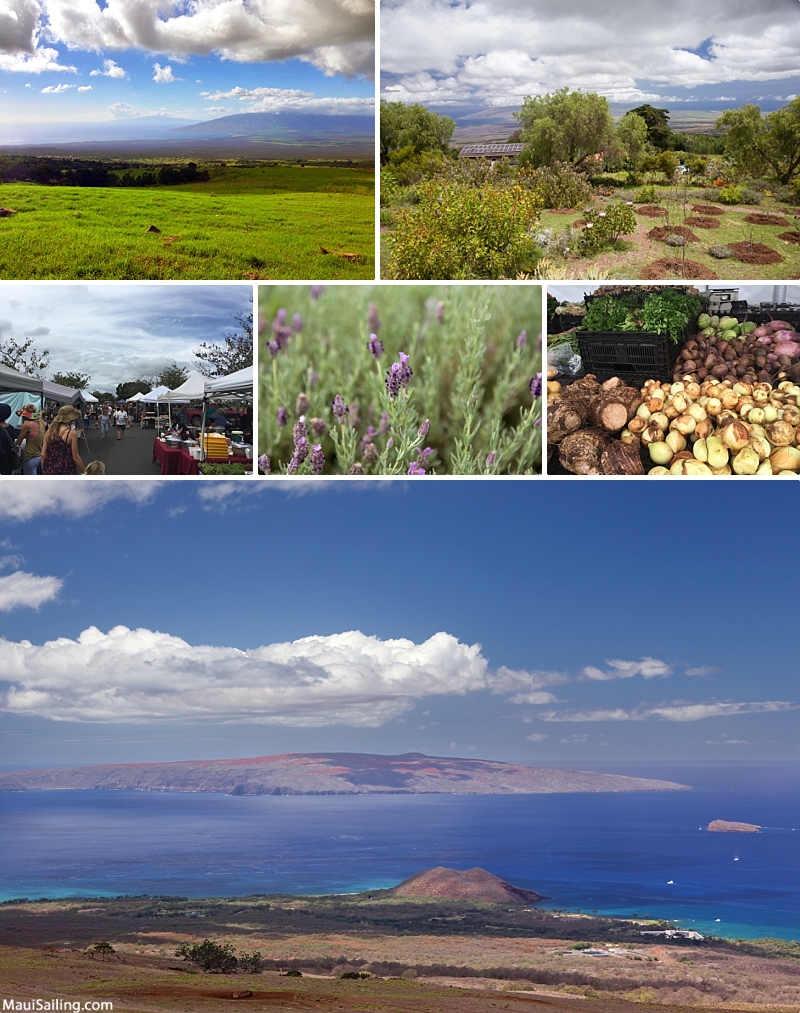
Best Things To Do Upcountry
- Peruse the Saturday morning Upcountry Farmer’s Market at Kulamalu Town Center.
- Stay the night at Makawao’s premier boutique B&B, North Shore Lookout, and get a feel for Maui country life.
- Stop by Hot Island Glass in Makawao to watch glassblowing masters at work and maybe pick up a piece to bring home.
- Explore the Kula Botanical Gardens and Aliʻi Kula Lavender Farm.
- Enjoy a pizza and locally brewed beer from Restaurant Marlow and Mahalo Aleworks in Pukalani.
- Skip the reservation hassle and take a Haleakala sunrise tour with Haleakala EcoTours.

EAST MAUI
East Maui is vast, stretching from the outskirts of Haiku on the North Shore to Kipahulu. The notorious winding Road to Hana traverses this region.
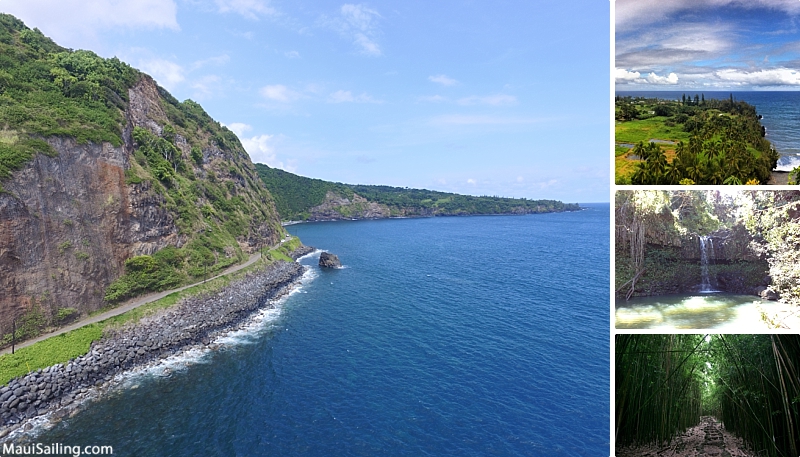
Accommodations: There are slim pickings for accommodations on the way to Hana, but there are a few to choose from once you reach the small town. Hana is home to one impressive hotel and several other small condos and B&B’s. Alternatively, you can find camping options at Waiʻanapanapa State Park and the national park at Kipahulu.
Attractions: The Road to Hana is one of the island’s most sought-after attractions, and it would take pages to list all of the stops. However, along the route, you’ll pass countless waterfalls, several hiking trails, innumerable fruit stands, and beautiful jungle views left and right. One of the region’s biggest attractions is the black sand beach at Waianapanapa State Park (reservations required) and the bamboo forest along the Pipiwai Trail.
Shopping and dining: If you consider browsing roadside fruit stands shopping, then you’re in luck. Otherwise, East Maui doesn’t have much in the way of shopping. Although, you can probably find some pretty nifty souvenirs from local vendors. Once in Hana Town, there is one proper restaurant to speak of. However, there are multiple delicious food truck lots and two general stores.
Atmosphere: Hana’s atmosphere feels like a step back into old Hawaii, as the area has thankfully avoided overdevelopment and other outside influences. The people in Hana are mostly Hawaiian and some of the friendliest people around- so long as you show them and their home respect.
Climate: East Maui is essentially a giant rainforest, which means it rains, a lot. Aside from Upcountry, it’s one of the cooler places on the island, and it usually rains at least once a day.
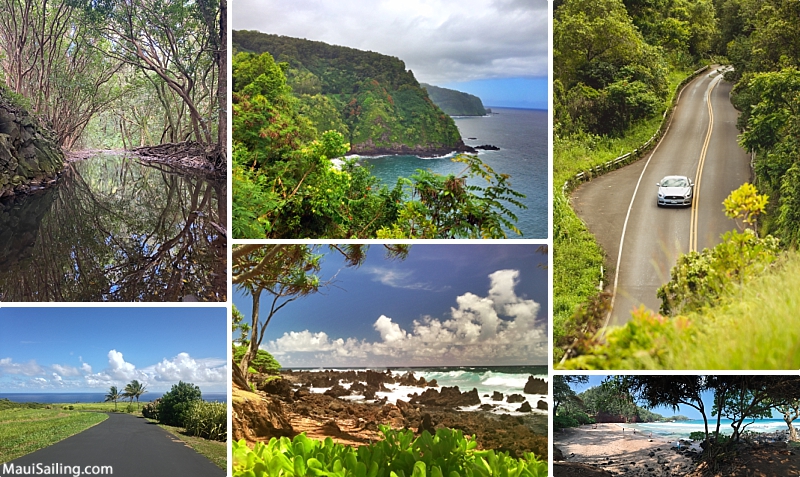
Best Things To Do In East Maui
- Take a private jeep tour of the road to Hana with Hana Tours.
- Explore Haleakala National Park at Kipahulu.
- Take an in-depth nature tour at Twin Falls with Hike Maui.
- Stop by Aunty Sandy’s in Keʻanae for the island’s best banana bread.
- Try the plate lunch at Braddah Hutt’s, or stop for Huli Huli Chicken at Koki Beach.
- Read up on the Hana Highway code of conduct and check the weather report before you make the drive!


